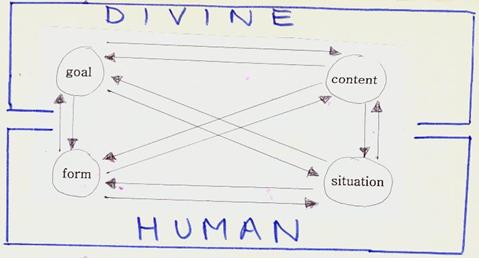Studying
the Parable of the Vineyard in Isaiah 5
The
Parable of the vineyard is one of the most beautiful poems in the Hebrew
Literature. It is popular to doctoral students for their Hebrew Examinations.
It is poetry in Hebrew par excellence. No doubt. If you study Classical Hebrew,
you will have this poem for your literature selection.
Commentaries
on Isaiah 5 is problematic in the following areas: they either focus on the
author’s goal or the content or the form of the text (like all the poetical
devices that you can find in the poem, no different than modern poems) or they
will focus on the situation that is talked about.
Most
scholars discuss the poem separated from the role of God or the divine role in
the Poem. Instead of the Divine revealing Himself to humans, they think that it
is purely a human reflection on how possibly a Divine would speak to humans
about Himself. Can you see the difference?
Adventists
operate with a harmony of Divine and Human in balance of consideration. What
the Holy Spirit wants to convey to humans as His goal and content will find a
human vehicle (language) and situation (culture) through which the Holy Spirit
will reveal Himself or His content. His goal is not completed until He has
edited the human author’s selection of words, not the spelling errors or
dialectical spelling differences, or using a short form instead of a long form
or inconsistency in doing so. The Holy Spirit does not want a machine copy or
computer perfected copy. He wants a human speaking to a human but the content
cannot be humanized, secularized, distracted, self-orientated, taking away even
a jota or tittle from what the Holy Spirit intended to pack into the message.

Some
scholars study the parable in Isaiah 5 with a focus on the situation so that
they want to compare Isaiah’s culture with the Ancient Near Eastern
culture-matrix. It may lead to “parallelomania” as Samuel Sandmel warned. Benno
Landsberger pointed out that each culture has their own “conceptual autonomy”
which makes comparisons more restricted.
Other
scholars want to study Isaiah 5 as form and thus are textually bound to all
kinds of nice things we can find in the form of alliteration, assonance, rhythm
etc. W. Richter is such an example.
The
criterium for study of this parable by other scholars is content. It is the
approach of A. Graffy.
W.
Prinsloo was a Dean of Theology of the Reformed School in Pretoria and he
suggested a synchronic approach to Isaiah 5:1-7: “A synchronic approach implies
a formal analysis of Isaiah 5:1-7 so as to determine its structure. This
structure provides an objective framework for studying all aspects of the
text”. It implies that a total abstinence from all the other elements will
provide the solution.
A better
approach is to use Gerhard Hasel’s words for the theological center of the Old
Testament. He was a Dean of Theology at Andrews University and suggested a
multiplex approach which found favor with many scholars in South Africa and in
the Calvinistic world, scholars like P. A. Verhoef and others.
An
inseparable interrelationship exists here that makes one dependent upon the
other. Different than in other schools, in Adventism the interrelationship is a
balancing act within the divine and human interaction. Content cannot be
understood without understanding the goal of the Holy Spirit in general, the
goal of the author in particular and without the form of the author there will
not be a proper content that other humans can understand and the goal of the
author as well as the goal of the Holy Spirit cannot be seen.
If your
lecturer or your pastor does not honor the divine goal of the text or that the
content is divine in origin, dump him and find another one who does. The Bible
can only be studied on the knees and with no other way.
















